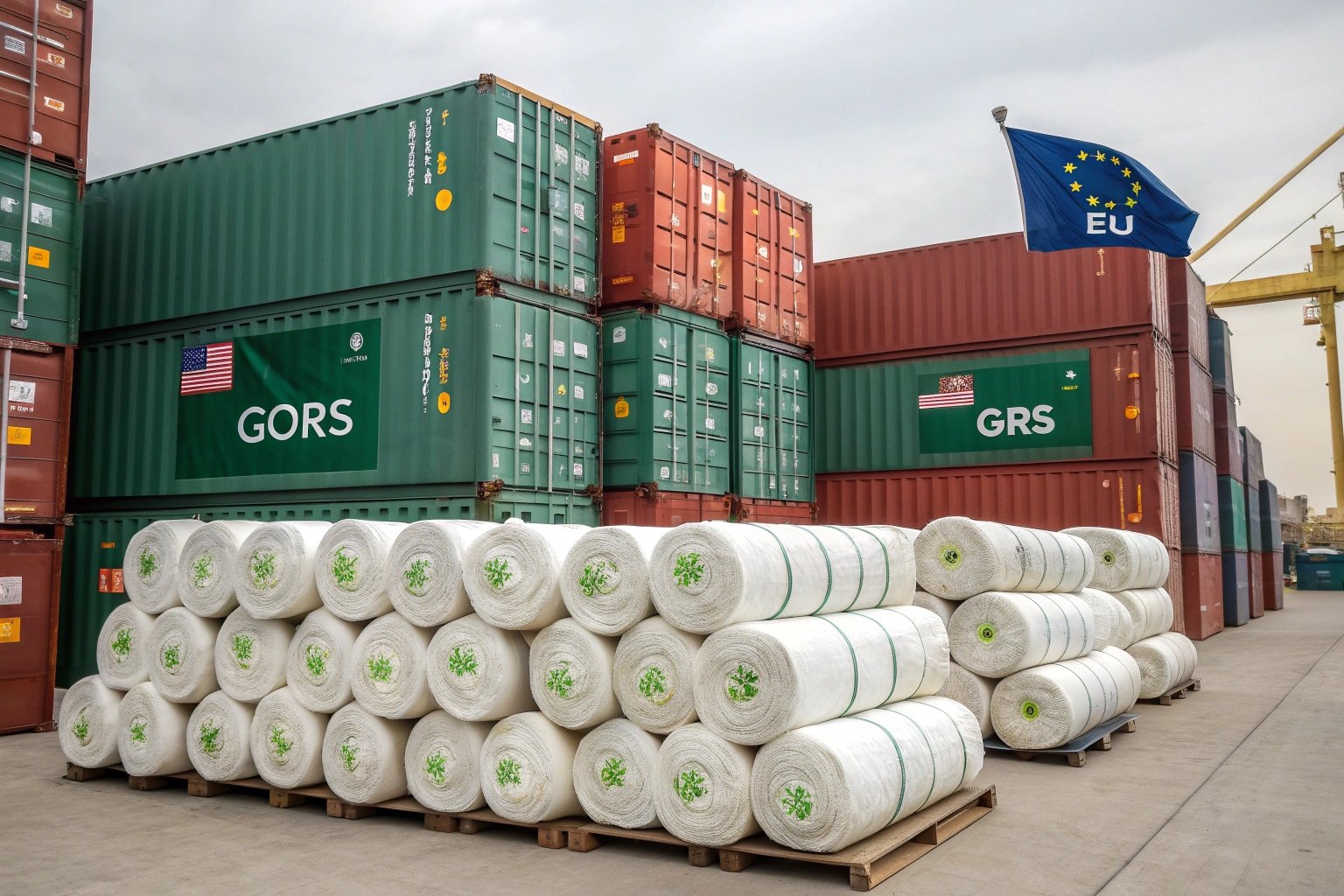Eco-friendly fabric exports to Europe are soaring—and it’s not by chance. As a fabric manufacturer in China’s Keqiao district, I’ve watched our own EU orders for certified sustainable textiles rise over 30% year-on-year. What’s fueling this demand? It’s a mix of stricter regulations, shifting consumer values, and smarter sourcing.
The 30% growth in EU eco-fabric exports is being driven by legal sustainability mandates, fashion brand accountability, better certification frameworks, and improved sourcing logistics from trusted hubs like China.
Let’s explore each driver in detail and show how you—whether buyer or supplier—can ride this green wave responsibly.
How Are EU Laws Fueling Eco-Fabric Demand?
The EU is tightening environmental standards—and fabric sourcing is under the microscope. Brands must now prove the fabrics they use are clean, certified, and traceable.
EU regulations like the Green Deal, CSRD (Corporate Sustainability Reporting Directive), and Ecodesign Framework require brands to disclose sustainability performance—pushing them to demand more certified eco-fabrics.
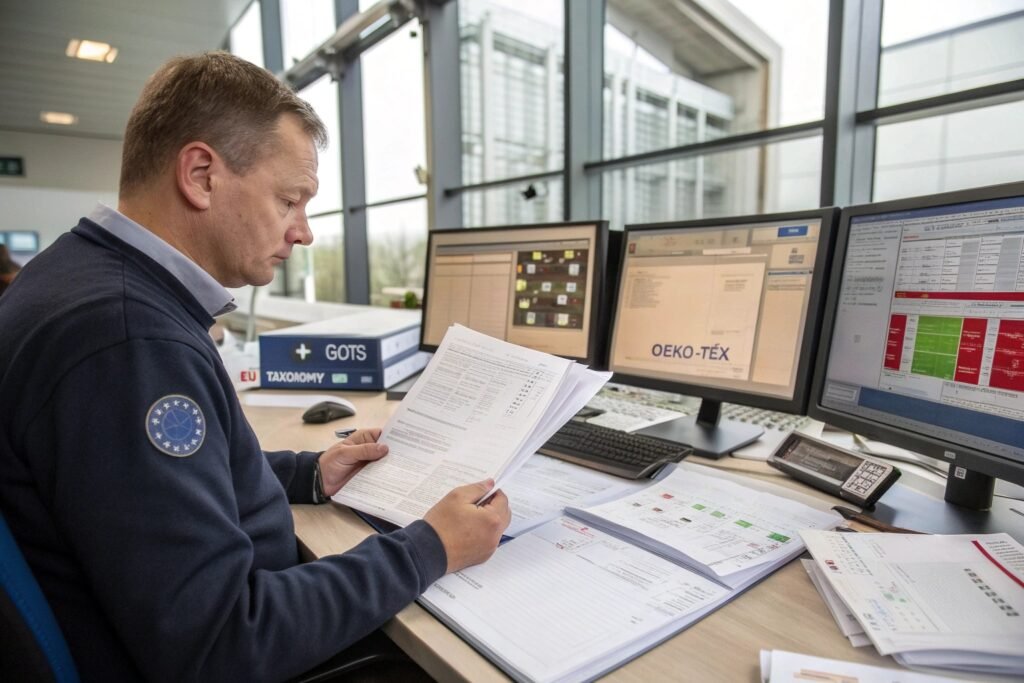
What EU Policies Impact Fabric Imports?
- CSRD: Large brands must report environmental impact across supply chains—including fabric origin and processes.
- EU Green Deal: Targets climate neutrality and pushes brands toward verified low-carbon sourcing.
- Ecodesign for Sustainable Products Regulation (ESPR): Aims to ban products that lack recyclability or durability—affecting unsustainable textiles.
Buyers are now asking for test reports, dyeing records, fiber origin proofs, and traceable batch data just to meet audit requirements.
How Do Suppliers Align with These Laws?
We help EU clients comply by offering:
- QR-tagged fabric rolls with compliance sheets
- GOTS, OEKO-TEX, and GRS-certified yarn and dye logs
- Digital traceability reports matched to EU import declarations
This makes customs clearance smoother—and audit prep far easier.
Why Are Brands Prioritizing Certified Eco-Textiles?
Sustainability isn’t just about compliance anymore—it’s become a selling point. Brands now position eco-fabrics as a premium, trust-building feature in their collections.
Fashion and apparel brands in the EU are prioritizing certified eco-textiles to meet consumer expectations, gain retail access, and strengthen their long-term sustainability narrative.
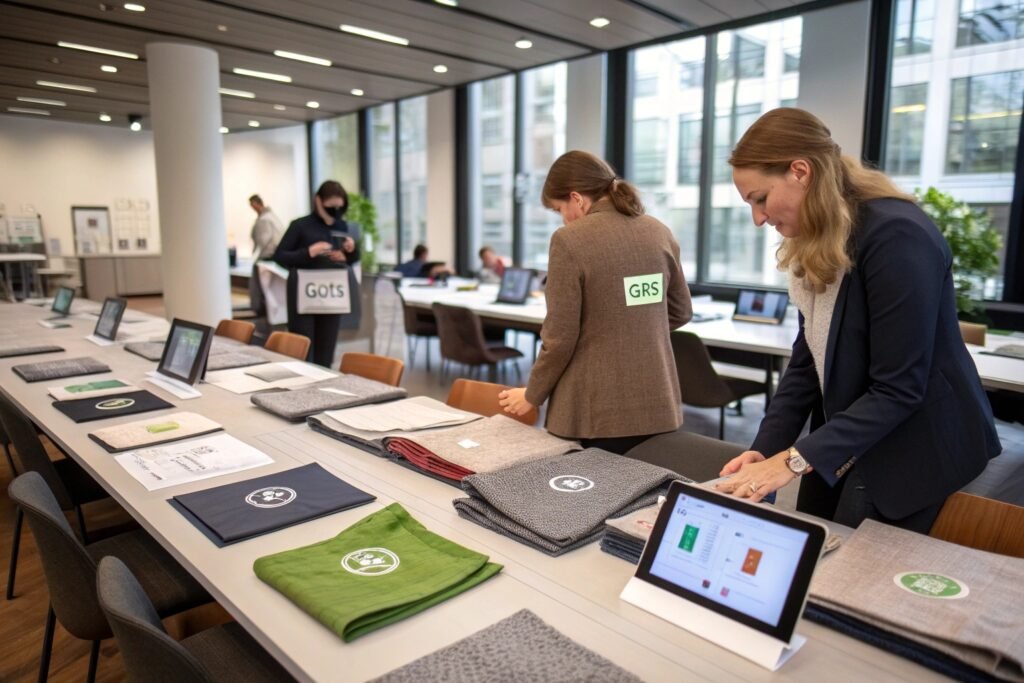
What Certifications Do Brands Look For?
- GOTS (Global Organic Textile Standard): Organic fiber + non-toxic processing
- GRS (Global Recycled Standard): Recycled content verification + supply chain traceability
- OEKO-TEX Standard 100: Safety from harmful chemicals
- EU Ecolabel: Lifecycle-focused certification for EU markets
At Fumao, most of our EU clients—especially in kidswear and activewear—demand at least two of these labels per order.
How Do Certified Fabrics Boost Brand Value?
Certified eco-fabrics:
- Command higher shelf prices
- Attract conscious Gen Z and millennial buyers
- Reduce reputational risk (greenwashing backlash)
- Win over retailers like Zalando, H&M, Decathlon with strict eco-checklists
Buyers even ask for videos of our dyeing process to prove we use APEO-free and low-impact colorants.
What Role Does Traceability Play in Growth?
The EU’s eco-fabric boom isn’t just about good materials—it’s about verifiable sourcing. Traceability ensures that sustainability claims can hold up in audits and consumer scrutiny.
Traceability links each roll of eco-fabric to its fiber source, production methods, and compliance documentation—building trust in export markets like the EU.
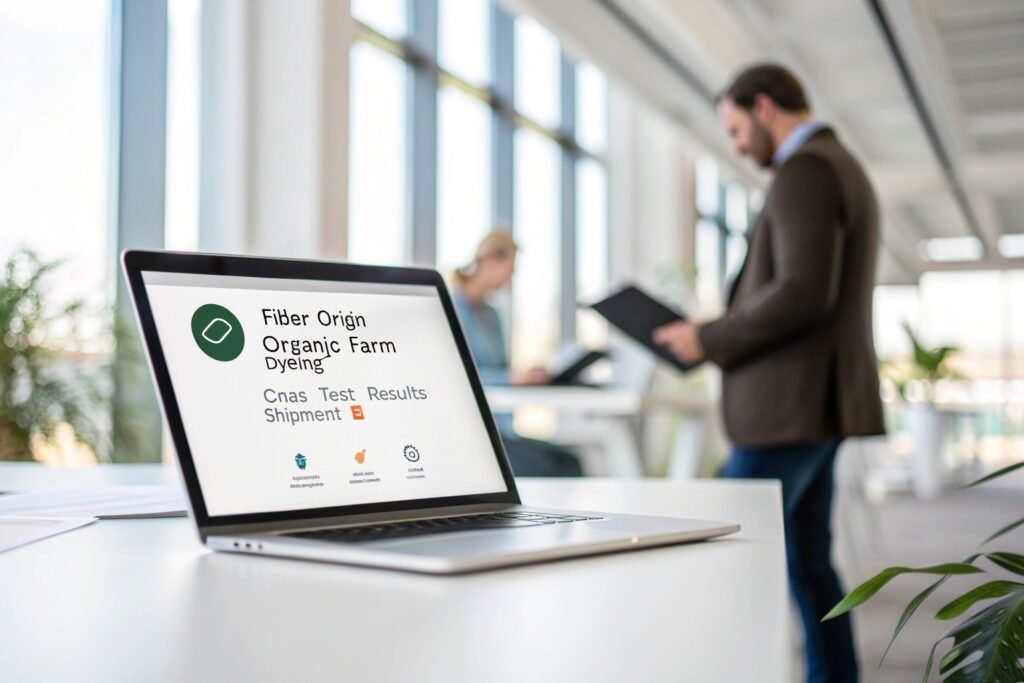
What Traceability Systems Are Required?
We offer:
- QR labeling tied to cloud-stored batch reports
- Fiber origin statements (organic/recycled)
- Eco-chemical usage declarations
- Lab test records (shrinkage, pH, heavy metals)
These meet EU due diligence standards, and increasingly, traceability is a pass/fail factor in vendor approval.
How Does Traceability Protect EU Buyers?
- Prevents customs delays caused by missing documentation
- Allows fast response to retailer trace-back requests
- Enhances supply chain risk audits
- Verifies that “organic” or “recycled” isn’t just a marketing term
That’s why many of our EU clients ask to inspect traceability systems via video or WeChat during quoting—even before lab dip approval.
How Are Chinese Factories Improving Eco Export Capacity?
Once considered polluting giants, many Chinese textile factories have invested heavily in sustainable upgrades—especially for exports to demanding markets like the EU.
China’s top eco-textile exporters now offer short lead times, low-MOQ development, and batch-level compliance for organic, recycled, and non-toxic fabrics—all backed by international certifications.
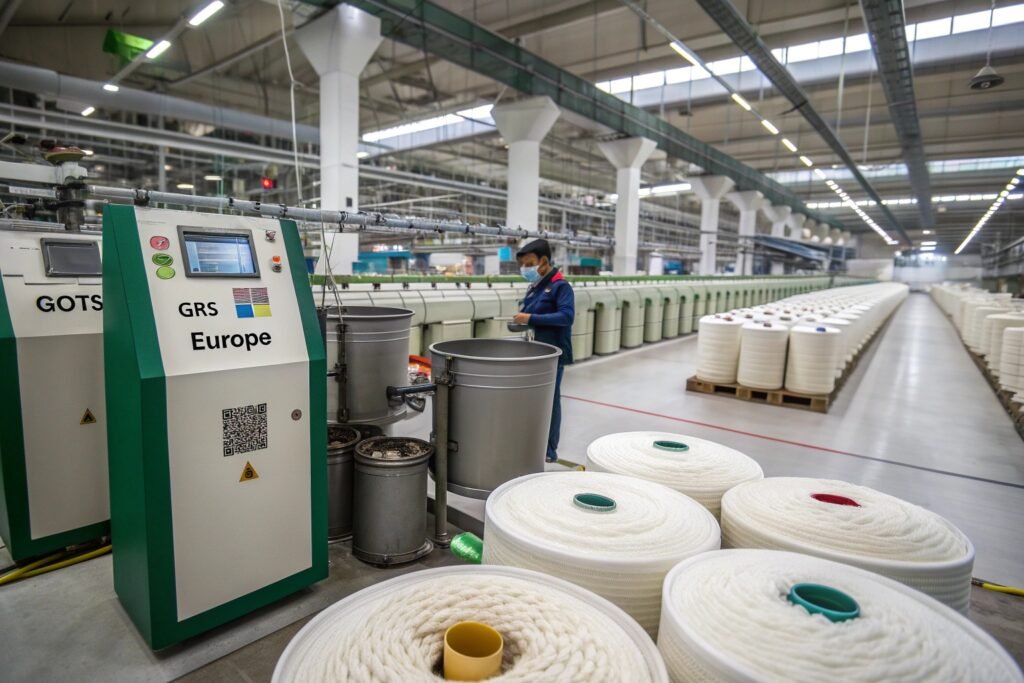
What Are the New Factory Capabilities?
At Fumao, for example, we’ve built:
- In-house CNAS-certified lab for eco-chemical testing
- QR-based batch traceability for GOTS and GRS rolls
- Partnerships with low-emission dyehouses
- Compliance with REACH, CPSIA, and EU Ecolabel standards
We also offer:
- 48-hour lab dip development
- 3–7 day sample yardage
- 15–20 day bulk delivery windows
Why Are EU Buyers Choosing China Over Local Mills?
- Scale: Broader fabric libraries and more R&D output
- Speed: Faster delivery vs. limited EU production
- Flexibility: Custom MOQ with full certification
- Price: Competitive despite eco-upgrades
And with EU–China green diplomacy improving, trust in verified suppliers continues to rise.
Conclusion
The 30% growth in EU eco-fabric exports isn’t just a trend—it’s the result of clear drivers: stricter EU laws, rising brand accountability, smarter traceability systems, and the evolution of China’s textile supply chain.
At Fumao, we’re proud to be part of this transformation. With certified organic and recycled fabrics, digital traceability, and over 30,000 eco styles in stock, we help EU buyers source greener—faster, and with total confidence.

